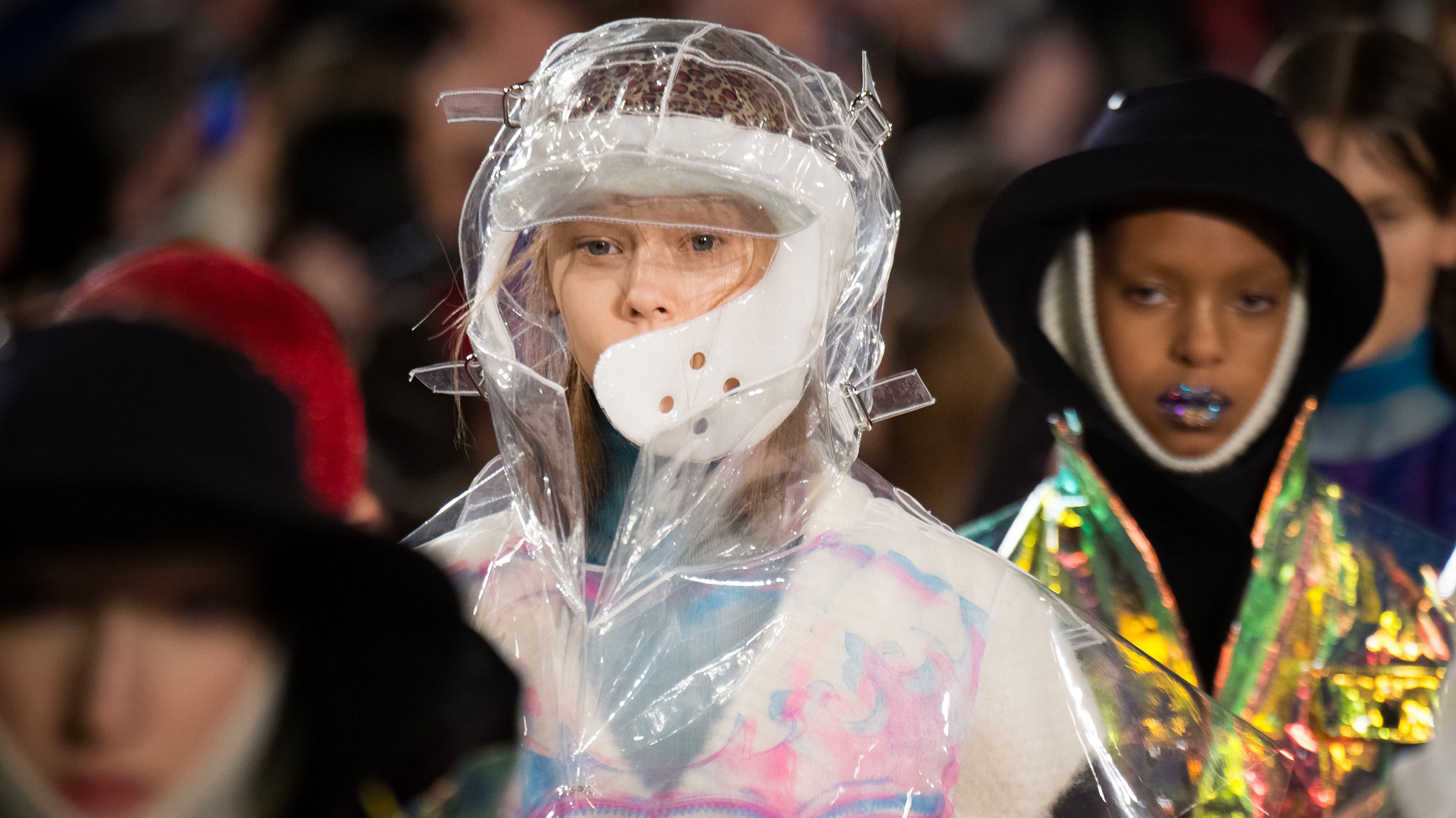Bundled wraps, plastic sheets, thick coats—it’s not just layering that’s dominating Fall/Winter 2018 collections, but a clear need for safety and comfort in times of uncertainty.
Has the world evolved into a dystopian nightmare? With climate change ravaging the environment, unbearable conditions are transforming the way we live. The gap between the rich and the poor is widening as the middle class disappears not just in the United States, but across the globe. Mass shootings are the norm in the United States, with an average of one occurring every other month and countless lives lost due to senseless violence. In the past few months, the #metoo movement highlighted the fact that most women have been subjected to traumatizing sexual harassment and abuse. The list could go on and on, touching on subjects like racism, human trafficking, and more, but the harsh reality is that the world is far from the ideal we want, and fashion designers have responded by incorporating a protective shield in their collections—a response to the primal need to feel safe—into their Fall/Winter 2018 collections.
For some designers, this has meant a warm and cozy shell to provide a sense of comfort in a time of distress. At Jil Sander, Lucie and Luke Meier responded to all the negativity in the news by portraying their ideal future—one that is positive and feels good‚ through comfortable fabrics like fleece and wool, using silhouettes that encase their wearers in cozy cocoons of warmth.
Miuccia Prada went the utilitarian route with her fall collection, using padded rainwear made from the label’s signature Pocono nylon. “My dream is for women to be able to go out in the street and not be afraid,” Prada told Vogue. “I wanted to have the freedom exaggerated.” In a way, the durable materials she could be an armor from the predators of the street who see women as prey.
Jonathan Anderson made a similar approach at Loewe when he deployed an array of coats in leather and shearling. While Raf Simons used mylar—a synthetic material that not only protects, but also insulates—on his dresses, gloves, and gilets. Simons, like Prada, chose the utilitarian route, adding reflective tape to trim jackets that resembled those worn by emergency workers. Simons referenced Safe, the Todd Haynes film from 1995, where Julianne Moore suffers from an illness of an unknown vector. Here again, the urge to keep a woman who wears his clothes protected.
Elsewhere, designers used plastic as their protective shield, a non-biodegradable material that while not environmentally friendly, is waterproof and keeps the elements—a metaphor for the problems of the world—out. At Maison Margiela, John Galliano covered his models in enormous, bulky parkas, to keep out the cold, and perhaps, the harsh world that surrounds us. He also covered looks in transparent plastic trenches or hoods to guard the delicate fringe underneath from damage. This waterproof layering also showed up in the form of a transparent poncho lined with red piping at Each x Other and a clear plastic skirt at Balmain.
The need to protect was extended by several labels by offering money to charities. Lacoste’s desire to save the environment is being animated through its latest capsule collection. The brand is replacing its iconic crocodile logo with green endangered species like the vaquita, the Javan rhinoceros, and the California condor for a capsule collection where proceeds will go to a conservation charity. On the heels of the tragic school shooting in Parkland, Florida, Gucci recently announced a donation of $500,000 to March for Our Lives. Balenciaga paraded a sweatshirt with the World Food Programme logo on it with plans to donate a percentage of sales to the organization.
Fashion is often a reflection of the world in which we live, and the fact of the matter is that in such precarious times, the world needs both comfort and protection—primarily from ourselves. After all, human nature caused the environmental and societal woes that brought us to this very point in time in the first place. Although the human race is, indeed, selfish in many ways, it also has the power to be selfless—the very behavior that can be a catalyst for meaningful change.







